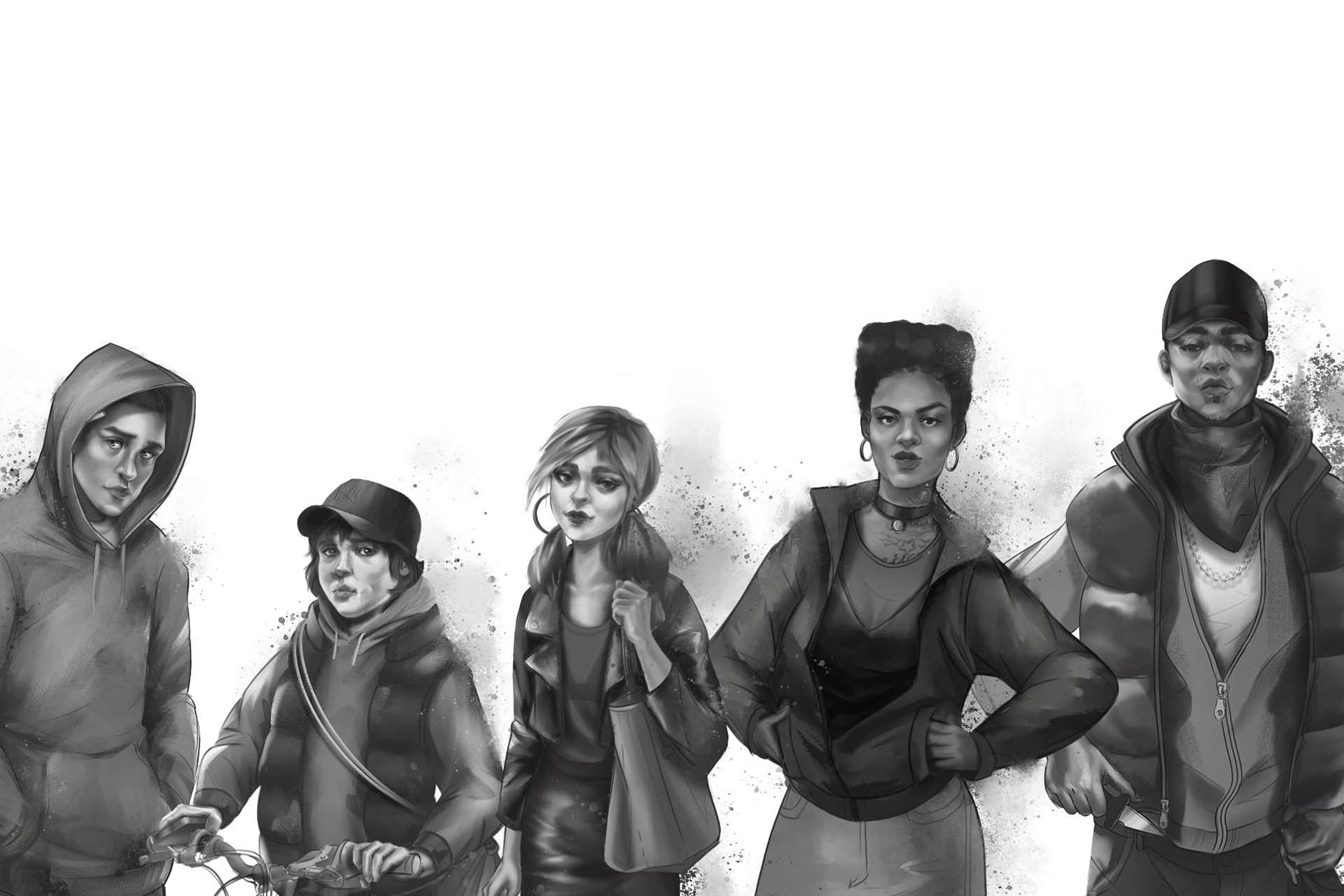Crossing the line was developed by the CCP in response to the growing issue of gangs, county lines and knife crime. In the UK there are 27,000 children identifying as gang members and 34,000 gang associated children have been the victim of violent crime in the last 12 months (Longfield 2019).
Whilst it is necessary and useful to have a sense of the scale of the crisis, it is important that we challenge and evolve our understanding of the term ‘gang’. ‘From Postcodes to profits’, (Whittaker et al 2018) highlights that gang culture is redefining itself as a ruthless drugs business; one where visible signs of gang membership are no longer desirable as they can attract attention and have the potential to affect the marketplace. Therefore, models of recruitment and expansion have evolved, placing many children at significant risk. In order to better understand this, it is important that we widen and focus our attention on the growing issue of county lines and knife crime.
County lines Home office definition (2018) p.2
“a County Line is a term used to describe gangs and organised criminal networks involved in exporting illegal drugs into one or more importing areas [within the UK], using dedicated mobile phone lines or other form of “deal line”. They are likely to exploit children and vulnerable adults to move [and store] the drugs and money and they will often use coercion, intimidation, violence (including sexual violence) and weapons.”
The Children’s Commissioner’s report ‘Keeping kids safe’ draws parallels to the crisis in child protection from CSE a decade ago. Particularly that many CSE victims were not identified as such and there has been an urgent call to “learn from the mistakes of child sexual exploitation by treating children as victims not perpetrators” (Longfield (2019, p3). Changing the language we use from ‘gang affiliated’ to “criminally exploited” is an important step on this path.
Another recurring theme is the need for effective multi agency working on a local level as well as a national scale. The contextual safeguarding approach, that was originally developed by Dr. Carlene Firmin at the University of Bedfordshire’s Contextual Safeguarding Network, recognises young people are influenced by a whole range of environments and people outside of their family. By understanding this approach and building on the substantial body of work from the network it is possible to create a fresh approach to multi agency working and engage the wider community.
Other useful sources of information:
Keeping kids safe: Improving safeguarding responses to gang violence and criminal exploitation Children’s Commissioner Feb 2019 https://www.childrenscommissioner.gov.uk/publication/keeping-kids-safe/
NCA County lines drug supply, vulnerability and harm 2018 file:///C:/Users/es515/Downloads/NAC(19)095%20-%20County%20Lines%20Drug%20Supply%20Vulnerability%20and%20Harm%202018%20v%202.0%20(1).pdf
From postcodes to profit: How gangs have changed in Waltham forest Whittaker et al 2018 https://www.lsbu.ac.uk/__data/assets/pdf_file/0018/128205/postcodes-to-profit-dr-andrew-whittaker.pdf
Early years foundation Intervening early to prevent gang and youth violence: The role of primary schools (March 2018) https://www.eif.org.uk/report/intervening-early-to-prevent-gang-and-youth-violence-the-role-of-primary-schools
Serious Case Review Summary Child Q “Where were you when I was six?” Croydon safeguarding children’s board https://croydonlcsb.org.uk/wp-content/uploads/2019/05/Child-Q-SCR-SUMMARY-PUBLISHED-May-2019.pdf
Children and young people trafficked for the purpose of criminal exploitation in relation to county lines a toolkit for professionals (NPCC 2018)
https://www.csepoliceandprevention.org.uk/sites/default/files/Exploitation%20Toolkit.pdf
Counting lives responding to children who are criminally exploited (July 2019) https://www.childrenssociety.org.uk/what-we-do/resources-and-publications/counting-lives-report
Safeguarding children and young people in education from knife crime: Lessons from London Ofsted March 2019 https://assets.publishing.service.gov.uk/government/uploads/system/uploads/attachment_data/file/785055/Knife_crime_safeguarding_children_and_young_people_110319.pdf
Serious case review Young person F. Dudley (Safeguarding Board) https://library.nspcc.org.uk/HeritageScripts/Hapi.dll/filetransfer/2018DudleyYoungPersonFOverview.pdf?filename=AA58F75CEDE68892A73FB681FE246B8371684F102152F0AA780A14959D3BCE5767137B3B2A935011CBAEC3068664FF681AA6D2524E357BAB96C006752CCD756759AD77BD1E389823A55CFAAE74B2EE64F46C611AD1724BE1AC50776135EBAAAFFECACF7BE12160F726AD26BF51F112EB4922F042D9A31FC44EF9CE4BA2647B7DCC38AAEAB26E2E96133E22441573569C09989299E522FEB314F153&DataSetName=LIVEDATA
Gang Girls: Agency, Sexual Identity and Victimisation ‘On Road’ Tara Young and Loretta Trickett 2017
An investigation into the sexual abuse and exploitation of females by gang-affiliated youth in Enfield Tara Young & Natasha Choudary London Metropolitan University February 2014
Serious case review Child Y Croydon safeguarding children board May 2019
https://croydonlcsb.org.uk/2019/06/child-y-scr/
Home office Criminal exploitation of children and vulnerable adults: County lines guidance (Feb 20) https://www.gov.uk/government/publications/criminal-exploitation-of-children-and-vulnerable-adults-county-lines/criminal-exploitation-of-children-and-vulnerable-adults-county-lines
A need to belong: what leads girls to join gangs Centre for Mental Health 2013
https://www.centreformentalhealth.org.uk/publications/a-need-to-belong
The mental health needs of gang affiliated young people Public Health England 2015 https://assets.publishing.service.gov.uk/government/uploads/system/uploads/attachment_data/file/771130/The_mental_health_needs_of_gang-affiliated_young_people_v3_23_01_1.pdf
Serious youth violence: What causes it? How can we reduce it? Lessons from research. https://www.ukyouth.org/wp-content/uploads/2019/10/Serious-Youth-Violence-Lessons-From-the-Research-final.pdf
Investigative journalism:
The Guardian has a whole series of reports into county lines. https://www.theguardian.com/uk-news/county-lines
Documentaries
BBC Britain’s teenage drug runners https://www.bbc.co.uk/iplayer/episode/p05hktz9/britains-teenage-drug-runners Channel 4 Britain’s child drug runners https://www.channel4.com/programmes/britains-child-drug-runners
